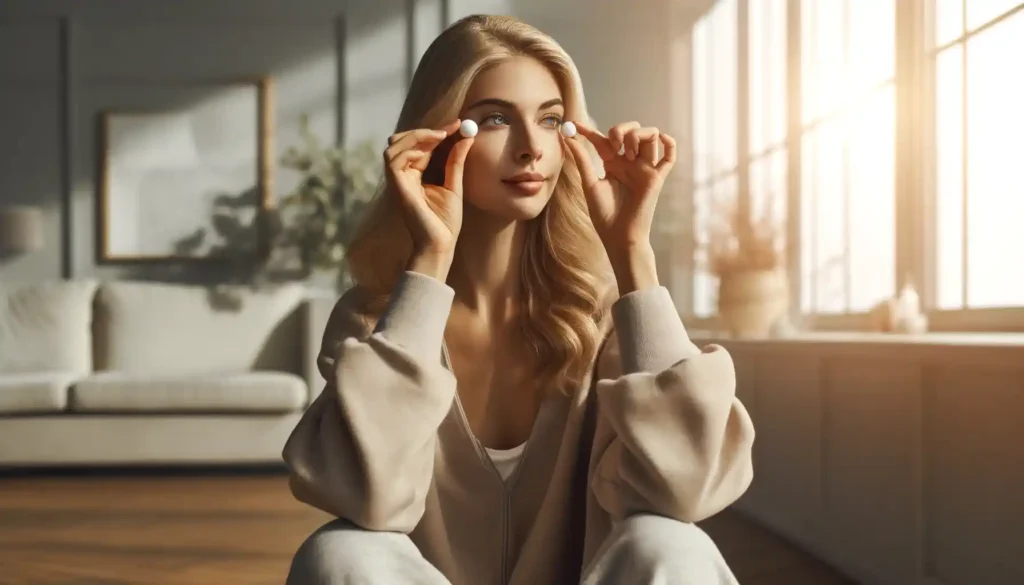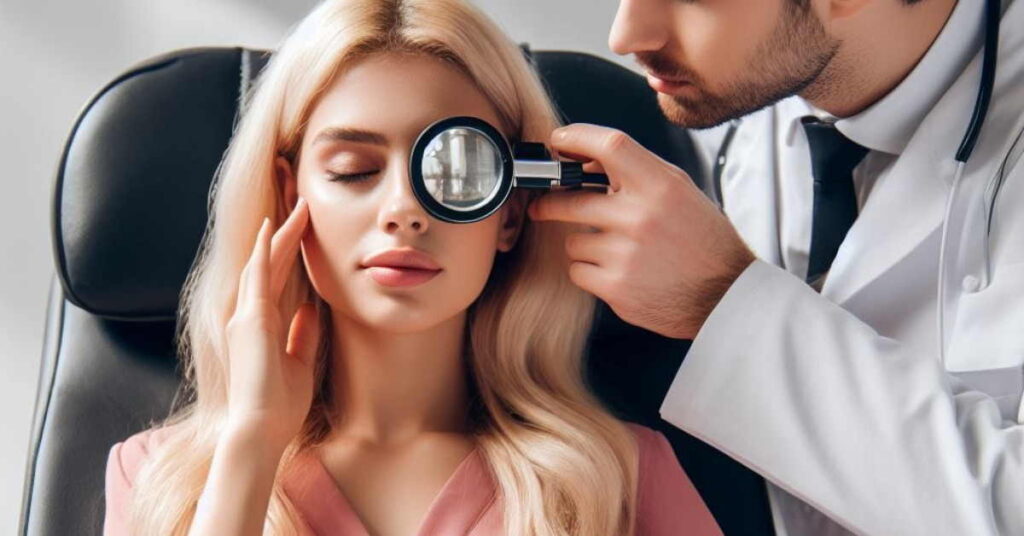Eye Muscle Balancing for Better Vision. Our eyes are incredible organs that constantly work together to provide us with clear and detailed vision. One often overlooked aspect of maintaining good vision is the balance and coordination of the eye muscles. These muscles are responsible for precise eye movements and focusing, ensuring that we can see the world around us with clarity. In this article, we will delve into the importance of eye muscle balance and how it can significantly improve your vision.

Understanding the Eye Muscles
Before we explore the concept of balance, it’s essential to understand the role of the eye muscles. The human eye is equipped with six extraocular muscles that control its movement. These muscles work in harmony to enable us to look in different directions, track moving objects, and maintain a stable gaze. They are:
- Medial Rectus Muscle: This muscle moves the eye inward towards the nose.
- Lateral Rectus Muscle: It moves the eye outward towards the temple.
- Superior Rectus Muscle: This muscle is responsible for moving the eye upward.
- Inferior Rectus Muscle: It moves the eye downward.
- Superior Oblique Muscle: It primarily rotates the eye, helping us to look down and inward.
- Inferior Oblique Muscle: This muscle aids in eye rotation, allowing us to look up and inward.
Balancing Eye Muscles for Better Vision
Maintaining optimal vision depends on the precise coordination and balance of these eye muscles. When the muscles work together harmoniously, we can focus on objects, switch our gaze between near and far, and maintain steady vision while in motion. However, imbalances in these muscles can lead to various vision problems, including:
- Strabismus (Crossed Eyes): This occurs when the eye muscles do not work in unison, causing one eye to deviate inward or outward. Strabismus can result in double vision and reduced depth perception.
- Amblyopia (Lazy Eye): An imbalance in eye muscle coordination can lead to amblyopia, where one eye becomes weaker and less functional than the other. This can result in reduced visual acuity in one eye.
- Convergence and Divergence Issues: Problems with eye muscle coordination can affect our ability to focus on objects at different distances. Difficulty converging the eyes (bringing them together to focus on close objects) or diverging them (spreading them apart to focus on distant objects) can lead to eyestrain and discomfort.
Improving Eye Muscle Balance
The good news is that eye muscle balance can be improved and maintained through various exercises and habits:
Eye Exercises: Simple eye exercises, such as light stretching, eye-rolling, and focusing on a near object and then a distant one, can help improve convergence and divergence abilities.
Balanced Visual Activities: Avoid prolonged periods of screen time or reading in dim light, as these activities can strain the eye muscles. Take regular breaks to relax your eyes.
Vision Therapy: In some cases, vision therapy prescribed by an eye specialist can help correct eye muscle imbalances.

Unlock Sharper Vision with Greater Vision Eyesight Academy Course! 🌟
Are you tired of relying on glasses or contact lenses to see clearly? Ready to experience the world with your own natural, sharp vision? Look no further than Greater Vision Academy’s Eyesight Academy Course—the ultimate solution to improving your eyesight naturally!
👁️ Why Choose Eyesight Academy?
🔹 Effective Eye Muscle Balancing Exercises: Our course is meticulously designed to provide you with the best eye muscle balancing exercises. Say goodbye to eyeglasses and contacts as you regain control over your vision.
🔹 Proven Natural Methods: We focus on time-tested, holistic techniques that strengthen your eye muscles and enhance your vision without the need for surgery or artificial aids.
🔹 Transform Your Life: Experience the confidence and freedom that clear, natural vision brings, whether you’re at work, enjoying hobbies, or simply living life to the fullest.
What You’ll Learn in Our Course
Eye Muscle Balancing Techniques: Discover and master a range of effective eye muscle balancing exercises that promote visual clarity.
Relaxation and Stress Reduction: Learn techniques to relax your eye muscles, reduce eye strain, and promote overall well-being.
Healthy Vision Habits: Develop habits and practices that support long-term eye health and maintain your newfound clarity.
🎁 Enroll today and receive a special early-bird discount on our Eyesight Academy Course!
🌟 It’s time to see the world through your own eyes, naturally and clearly! 🌟
Don’t settle for less—reclaim your visual freedom with Greater Vision Academy today! 👁️💪
Greater vision with Academy Course! 🌟
A Comprehensive Guide to Restoring Eyesight Naturally

Understanding the Relationship Between Overall Health and Vision
The health of our eyes is intricately linked to the overall well-being of our body. Factors such as liver health, blood circulation, and nervous system function play crucial roles in maintaining optimal vision. When our body becomes burdened with toxins or experiences breakdowns in its systems, it directly impacts our eyesight. Therefore, restoring eyesight isn’t just about treating the eyes themselves but about improving our overall health through various lifestyle changes.
Importance of Diet and Digestive Health
To kickstart the journey towards better vision, it’s essential to focus on nourishing our bodies with healthy, unprocessed foods. Additionally, maintaining regular bowel movements, typically two to three times a day, helps ensure that toxins are efficiently eliminated from the body. A diet rich in antioxidants, vitamins, and minerals supports eye health and aids in the prevention of degenerative eye conditions.
Understanding Glasses and Contact Lenses
While glasses and contact lenses offer temporary solutions for vision correction, they should not be viewed as long-term remedies. In fact, reliance on corrective lenses can exacerbate vision problems over time. It’s crucial to address the root causes of visual impairment, such as poor eye care, nutritional deficiencies, and excessive strain on the eyes. However, it’s important to exercise caution when transitioning away from corrective lenses, as abrupt changes can lead to eye strain and fatigue.
Gradual Transition Away from Glasses
Instead of abruptly discontinuing the use of glasses, it’s advisable to adopt a gradual approach. This involves gradually reducing the strength of lenses while incorporating natural vision improvement techniques. By consulting with an eye care professional and following a structured program, individuals can safely transition away from glasses without compromising their eye health. Patience is key during this process, as vision improvement takes time and dedication.
Timelines for Vision Improvement
The timeline for achieving optimal vision varies depending on individual circumstances. Factors such as the severity of visual impairment and adherence to recommended practices influence the speed of progress. While some may experience significant improvements within weeks, others may require several months or even years to achieve desired results. Consistency and commitment to eye exercises and lifestyle changes are essential for long-term success.
Empowering to Take Control of Eye Health
Restoring eyesight naturally is a journey that requires dedication, patience, and a holistic approach to health. By addressing underlying health issues, adopting a balanced diet, and implementing targeted vision exercises, individuals can significantly improve their vision without solely relying on corrective lenses. With proper guidance and determination, anyone can reclaim optimal vision and enjoy a lifetime of clear eyesight and vitality.
The balance and coordination of our eye muscles are fundamental to maintaining clear and healthy vision. By understanding the roles of these muscles and taking steps to improve their coordination, we can significantly enhance our visual experience. Regular eye care and exercises can go a long way in ensuring that our eyes work together harmoniously, providing us with the gift of better vision for years to come.
- How to Manage Astigmatism Naturally: A Comprehensive Guide
- How to get rid of under-eye bags Naturally? Top 10 Strategies for a Refreshed Look
- 5 Best Foods to Get Better Eye Health and Vision
- Top 10 Essential Facts You Need to Know About Eye Floaters
- How to UPGRADE EYESIGHT with Specialized eye Training


